Greece Part 3
One final stop: the Evangelical Greek Bible College in Pikermi (near Athens). This is the only evangelical college in the country, and we had the blessing of staying here for an entire week.
On our way to church the first morning, we passed sheep heads on the grill.
The cook insisted on a selfie :)
We worshipped with one of the very few evangelical churches in the area. The pastor of this small congregation served in Papua, Indonesia before becoming a missionary to Greece. He walked in wearing a Papuan shirt for the first time in a while, and the Indonesian student from our group excitedly connected with him. He pointed out a large picture on the wall of his father ministering as a missionary among a Papuan tribe on the student's home island!
The pastor, Jonathan, also directs Hellenic ministries; he shared with our team about the persecution they have faced: beatings, imprisonments, arrests and ostracization. They receive this pushback from the Greek Orthodox church and some members of the Roma community. Yet the Gospel continues to go forth! In fact, a group of Roma Christians worship weekly at Jonathan's church. I received a blessing beyond words by worshipping with them- a people group God put on my heart for intercession several years ago. No words can describe worshipping Jesus with people you prayed for yet never knew.
A walk around the side roads of Pikermi.
The Bible college had a prayer room decorated along the theme of bringing the Gospel to the nations.
Across the street was a small Greek Orthodox church. We were able to sit in for part of a service. The liturgy was sung in Greek, so we could not understand. Nevertheless, it proved interesting to observe the priests reading back and forth; congregates coming to the front throughout the service to venerate the icon there, with no apparent obligation to stay for the service; multiple of the older women sitting around me had liturgy books which they used to follow along. Afterwards, our team discussed the need to have conversation with these congregations and get to know the local church before making assumptions about incorrect theology.
A gyro shop frequented by the group.
We began our day trip to Athens with a visit to an ancient Olympics stadium.
Afterwards, we visited the Acropolis! This hilltop temple site is not unique to Athens. Across Greece, city states built temple on top of hills or mountains, so that it would be one of the first things visitors saw. Athens trumped the rest as a top city state, a fact reflected in its massive acropolis.
The hike up to the entrance...
Athens from above.
The throngs of tourists echoed past crowds coming to worship Athena, the goddess of Athens (note the city is named after their deity).
Another temple on the acropolis commemorating the goddess Nike, the deity of victory. One modern-day shoe company took this goddess's name and wings (the check mark symbol of Nike brand is meant to represent wings). Greek mythology proves inseparable from their history. This fact reflects in the way their gods and goddesses influence modern culture- even in shoes!
Hence rises the question: do you know what influences and infiltrates your life? The battle takes place not in flesh and blood, but in our minds and hearts. Why? We act according to what we believe. Thus, the enemy pours all his energy into having us believe lies- distortions of truth. Satan can never create anything new. He must take the beautiful creation of God and contort it to a dangerous weapon. His favorite arrows are those closest to the Truth, distorted just slightly. For example, the Greeks' longing for freedom, wisdom, love, etc. came from a beautiful place. However, they sought these in hand-crafted, manipulatable, fallible gods. They traded the truth for a myth, enslaving themselves to an endless hunt for satisfaction and security.
Thus, the Gospel entered Athens with power. Jesus's work secures freedom for those enslaved by ushering them into security of a relationship with God Almighty, based on His unfailing covenant love! Believing that you are a child of God changes everything! The acceptance, love, security and significance that is yours in Christ Jesus sets you free to love God with all your self, knowing He strengthens you to please Him and forgives you when you fall. Believing truth leads to obedience as an act of celebration!
The Apostle Paul addresses the tension of living in a world battling for your attention. He says at the end of Romans: "I urge you, brothers and sisters, to watch out for those who cause divisions and put obstacles in your way that are contrary to the teaching you have learned. Keep away from them. For such people are not serving our Lord Christ, but their own appetites. By smooth talk and flattery they deceive the minds of naïve people. Everyone has heard about your obedience, so I rejoice because of you; but I want you to be wise about what is good, and innocent about what is evil. The God of peace will soon crush Satan under your feet. The grace of our Lord Jesus be with you." (16:17-20)
Beware of empty promises
stones seeming strong
standing proudly,
attracting crowds
like flowers will fall
crumbling words
offering freedom
through enslaving demands,
perpetual cravings unsatisfied
hallow structures
presenting beauty
void of life
O, look up!
cast your eyes
to the skies
praising Life
the Word faithful
to fulfill every
promise
abundance overflowing
joy, peace, love
an embrace expansive
as the heavens
yet individually intimate
Gazing at these structures of massive engineering feats, the shock of Paul's words to the Athenians in Acts 17 resonate in a new way. "The God who made the world and everything in it is the Lord of heaven and earth and does not live in temples built by human hands. And he is not served by human hands, as if he needed anything. Rather, he himself gives everyone life and breath and everything else." These words must have rocked the listeners' worlds!
Do they rock mine and yours? God continues to show me over the past weeks how radically undeserved and expansive His grace is. How incomprehensible that He would take the place of our perfect sacrifice and High Priest, finishing every requirement and work for God's elect! We walk into salvation fully righteous, clean, loved, acceptable! No action we do could ever make God love us more or less. He offers life even to the thief on the cross, a man who spent his life in sin and had no time to offer good works as proof of a changed heart. He could only entrust himself to the mercy of God's Son experiencing hell so he may enter Heaven. God gave everything, welcoming us if only we surrender our hearts to Him in trust of His love! No wonder Paul wrote to the Ephesians, "I pray that you, being rooted and established in love, may have power, together with all the Lord’s holy people, to grasp how wide and long and high and deep is the love of Christ, and to know this love that surpasses knowledge—that you may be filled to the measure of all the fullness of God. Now to him who is able to do immeasurably more than all we ask or imagine, according to his power that is at work within us, to him be glory in the church and in Christ Jesus throughout all generations, for ever and ever! Amen." (Eph. 3:17-21)
Does the impossible reality of God's grace rock your world?
The white pieces of marble are duplicates made to fill in disintegrated stone. The tan marble, however, is original from the BC era! The acropolis sat above the city since the bronze age. However, the golden age occurred in the 400's BC, when Greece defeated Persia in Peloponnesian war.
The largest temple on the acropolis is called the Parthenon, a massive Doric-style structure built for the worship of Athena.
A side temple, the Erechtheion, next to an olive tree symbolizing Athena. Legend says that the royal family of Athens asked Athena and Poseidon to present gifts or memorials in order to decide which would be the city's deity. The royal family took pleasure in Athena's olive tree; thus, she became the city's goddess.
Restoration work being done on the Parthenon. Each temple on the acropolis underwent a certain level of destruction. The first wave occurred when Rome became a Christian states in the sixth century AD and temples across the empire, including the Parthenon, became churches. Later, the Turks invaded Greece. The Parthenon was used to store ammunition, causing it to become a target for attack.
Columns and stones from the temples' structures spread around the acropolis.
Athens downtown, as seen from above.
The Parthenon and Erechtheion
A ancient theatre at the base of the acropolis.
Roof tiles waiting to be restored to the Parthenon structure. The tiles fit together like a jigsaw puzzle, thus each piece needs to be situated where it was crafted to belong.
The Nike temple
"The grass withers and flowers fall, but the Word of the Lord will stand forever."
After touring the acropolis, we took a walk through the neighborhood to see the ancient agora (marketplace, hangout area where law was practiced and ideas exchanged).
Adorable alleyways lined with colorful buildings.
Art for sale
The agora proved expansive. Another temple sat in the agora, showing why Paul would be "greatly distressed to see that the city was full of idols."
More scenes from the agora...
Beautiful jewelry, quirky paintings, and old coins were sold to tourists around the agora, faintly echoing the ancient bustle.
The Areopagus, the hill on which philosophers met to discuss the latest ideas, was closed in the front so our group could not go on top as planned. However, a few of us found the back way up! As we climbed, we found multiple fun surprises (see bellow).
Old pottery littered the ground! We spent a long time examining the various paint colors and shapes of the shards.
A moving friend!
Groves of shrub trees lines the ascent.
The city of Athens, with the agora seen right above the tree tops.
The acropolis looming nearby.
The hike onto the acropolis, then the Areopagus showed me why idolatry is attached to high places. On high places (hills or mountains), one experiences a feeling of power and awe. The world seems smaller, problems shrink from looming giants to manageable mites in the distance. A sense of peace descends upon a person as they gaze across the beautiful horizon. Thus, the height gains a sacred air.
How wonderful that God sits enthroned above the earth! We cannot ascend to the heavens to His high place, as the builders of Babel attempted. Rather, the lowliness of our human state demands awe at the Holy One who is sovereign! "He sits enthroned above the circle of the earth, and its people are like grasshoppers. He stretches out the heavens like a canopy, and spreads them out like a tent to live in." (Is. 40:22)
Soil hardened
rejecting seeds
rocky
prohibiting growth
thorny
chocking life
life
open, accepting
tender, nurturing
courageous
sending forth roots
into words
truthful, faithful
growth
on ancient foundations
Back down in the streets of Athens.
Gyro, a Greek wrap made from pita bread, smoked meat, lettuce, tomato, tzatziki sauce, and french fries.
A field next door to the Greek Bible College. Wildflowers covered the terrain of Greece, speaking the beauty, independence yet cooperation, and free-reign spirit of this people.
Greek independence day occurred shortly after we left the country. The Greek Bible college students and staff hosted a night of traditional singing and dancing. We danced together for hours!
On our way to Corinth later in the week, we stopped at the Isthmus of Corinth which connects the Aegean and Ionian seas.
Ruins near the agora of Corinth.
Floral pattern mosaic
This plaque commemorates Erastus who served as a Roman official in Corinth and funded road pavement. The inscription dates to the first or second century AD. This Erastus may have been the deacon mentioned in 2 Timothy 4:20. Paul may have met Erastus while he visited Corinth in AD 56-57.
(Information from the plaque in the photo bellow)
This site bellow the agora cost nothing to visit, and we were able to have hands-on experience with the ruins. The expansive amount of historical artifacts and structures in Greece is mind-boggling!
Right outside of the agora stood the Glauke Fountain, a structure made of limestone. Water is pumped in via pumps rather than fed by a spring, like other fountains of the time. Legend says that Glauke was married to Jason; however, Jason also married Medea, who became jealous of Glauke and gave her a poisoned cloak. Glauke jumped into the fountain to stop the cloak from burning her.
In the background stands a temple to Apollo, built in the mid-500's BC.
The agora museum
The museum boasted dozens of statues, each designed with unique folds to the clothing. The ancient Greeks were fascinated with the human body, a fact shown through the art and acts of worship. For example, Asclepius was a god of healing. Worshippers crafted clay figures of the body parts he healed and brought them to his temple as an offering.
Perfume jars
broken cracks
told tales
times past
laughs
tears
terror
stillness
waiting
watching
dancing
dying
Style mattered to Corinthian women. Each of these figurines presented a different hairstyle and robe, intricately designed. This provides context for Paul speaking of Corinthian women covering their heads during worship. He may not have simply been speaking of modesty, but also of taking congregants' eyes off themselves or others and place the focus on Jesus. Corinthian society and ancient Greek culture at large placed great emphasis upon looks. Appearance spoke of one's status or worth. But in Christ, heart change mattered. Thus, Paul writes "from now on, we regard no one from a worldly point of view. Although we once regarded Christ in this way, we do so no longer." Surrender to Christ flipped a image-centered worldview on its head! "Though outwardly we are fading away, yet inwardly we are being renewed day by day." Jesus invited His Corinthian children to release their tight hold on the world and walk in freedom He offered, based in the hope of resurrection with perfected bodies in His presence.
Corinthian agora with the Acrocorinth in the distance
The attention to detail on every structural piece demonstrates the way architects of this period viewed their work as an art!
The bema (judgement) seat in front of which the Jews dragged Paul. If the proconsul, Gallio, would have condemned Paul, he may have been tied to the white marble post in the front of this picture (on which is engraved the flower depicted above) and beaten. However, God assured Paul to continue speaking because He was still at work in the city bringing in His flock. God used the unbelieving Gallio to protect His messenger.
View when standing on the platform of the bema seat.
Walls left from various shops
The Peirene Fountain, built by the Romans in the 1st century over a natural spring.
The "magnificent mile" of Corinth, where the top end stores resided. Paul may have sat here sewing tents with Aquila and Priscilla.
After visiting the agora, we drove up the mountain the Acrocorinth, the city's acropolis. The community built a fort here to take advantage of the strategic military location, from which they could watch and thus defend the nearby isthmus. The fort was built before the Hellenistic period (300-400's BC), repaired by the Macedonians (kingdom of Phillip II and his son Alexander the Great), destroyed and repaired under the Romans, then used by the Turks.
The entrance
Soldiers got a constant work-out climbing around the expansive fort. I commented that their life in the fort kept them strong for battle.
Stop by the tree, its shade beckons softy
Welcoming a weary traveler to sit restfully
Rejuvenating in stillness of green, growing life
Birdsong softly filling the breeze caressed land
A pause not perpetual but without hurry
The tower at one of the peaks
A few of us learned from our professor, Dr. Sanchez, who has experience in excavation, how to look for old shards of pottery. We followed Dr. Sanchez like a line of baby ducks, eager to listen to his observations about different architecture. Along our adventures, one girl found this Byzantine-era coin in the AcroCorinth! What a surreal experience to hold a coin that soldiers or civilians hundreds of years ago used! What did they desire? What transactions were made? Did they ever hold the coin and consider that all provision belong to the Lord? Do I consider the vapor every provision I receive is? Do I hold gifts from the Lord with open hands- hand open to receive and release?
A small building, perhaps a house?
A Byzantine-era chapel in the fort.
The altar, hidden behind a wall or screen. The priest only ministers here, and only men are allowed in by the altar.
Breathtaking views!
Back in the compound of the Bible college, God displays His great power shown in the massive view from the Acrocorinth also demonstrated in the delicate growth of a new bud. God Almighty stands above and outside creation, yet chooses to be intimately involved with His handiwork. His power extends far above any "strength" in creation. And He cares about the minuet details of individual lives.
Wildflowers! This gives a new perspective on Jesus's message about God clothing the flowers in splendor exceeding Solomon's adornment. I often focus on the provision piece, but rarely stop to consider that God is pleased to adorn the flowers. He makes them beautiful for His glory, sparing no effort despite their short lifespan. Who, then, am I to worry about my life when He spared nothing to restore me to fellowship with Himself?
Our last day in Corinth was free time for us to explore! A group of us headed back to Corinth proper.
(The picture above is artwork in the train station)
We visited a church with hundreds of years' history. In this location a temple to Apollo once stood. The Romans change the structure to public baths. When Christianity became the empire's state religion, the structure was used as a church. Later, a monastery was build over the old building. During the war for independence from the Turks, the monastery was bombed, killing 30 nuns. Only one wall of the monastery survived until Greece's independence in 1822. The current church was built to include the surviving wall.
Greek Orthodox church structures draw the worshipper's eyes upwards, focusing the attention of Jesus whose image is depicted in the topmost dome.
The fresco of the old monastery wall
Stairs into the catacomb-like underground structure (which had been above ground when the site boasted Apollo's temple or the Roman baths).
Mosaic flooring
The first room was a chapel dedicated to the 30 nuns who lost their lives in the bombing.
Each stone lining the walls of this room is a tombstone. Instead of engraving words on the stones, people from the ancient eras told who the deceased was through picture scenes.
For example, one the left sits a wealthy woman adorned in robes and well-done hair.
A box of incense bottles, used to anoint dead bodies (remember the woman who shattered an alabaster jar and poured perfume on Jesus, or the women who went to the tomb with spices to anoint Jesus's body?)
Tunnel between rooms
The church built in place of the Roman baths. Behind the altar you can still see the structure of the baths.
Pillars held up the floor of the pool where patrons would bathe. Slaves kept a fire going amidst the pillars to heat the water.
Back up into the church's second story.
Another Greek orthodox church in Athens, this one cathedral size and completed in the 1930s.
Walking around town
We found another popular destination, a tall hill in the middle of the town. The acropolis and agora can been seen in the distance.
A beautiful restaurant on top the hill. I always thought of Greek buildings as stereotypically white. Turns out it's true! (See the large number of white buildings in the panorama view view of the city in other pictures!)
We stumbled upon another small but old church. A friendly woman cleaning the one-room building showed us saints cut out of the frescos. The Ottoman Turks cut out certain figures when they took over the country, but left characters without distinguishable figures untouched.
We hiked the Areopagus again to watch the sun set as we read Acts 18, reminisced about the trip, and shared childhood memories.
Ruins even in the train station! You can't dig anywhere in Greece without finding more!
All too quickly the trip comes to a close. How hard to close a precious, short chapter of learning, unity, and adventure. Yet I'm thankful for lasting friendships made and memories to hold. As my friend told me when I bemoaned leaving one location of Greece for another, "Onto bigger and better things!" She was right. I would have lost dozens of sights, stories, moments of awe if I stayed put as I originally wanted. Not every season ahead will have fun or delight. But refusing to move forward in fear of loosing what you currently hold always robs you of growth, new relationships, and gifts found only in continuing the journey. Closing a season inevitably results in goodbyes, which are hard. And every goodbye leads to a hello. A new possibility, lesson, height, sight, friend. The greatest danger is not movement in the wrong direction, but stagnancy in fear of moving.
 A few group photos from the trip! I cannot glorify God enough for the unity He brought to the group in answer to many prayers! I loved my time with each person, am incredibly thankful they shared their stories and thoughts, and enjoyed seeing pieces of God's character displayed uniquely in the diverse personalities!
A few group photos from the trip! I cannot glorify God enough for the unity He brought to the group in answer to many prayers! I loved my time with each person, am incredibly thankful they shared their stories and thoughts, and enjoyed seeing pieces of God's character displayed uniquely in the diverse personalities!In Corinth; a photo taken with the Moody Bible Institute Orchestra, who was also on tour in Greece while they played for evangelical churches across the country.
On the Athenian acropolis
In Meteora by the monasteries
On Mount Olympus
Lion statue in Amphipolis
Sunset in Thessoloniki




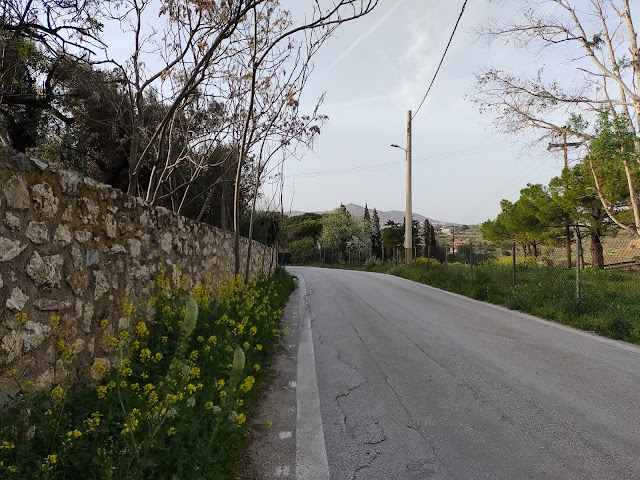



























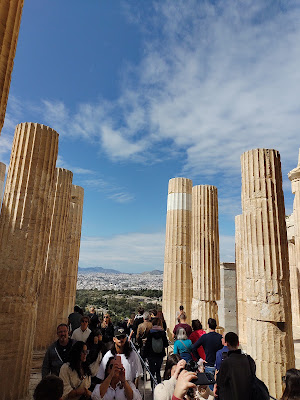

















































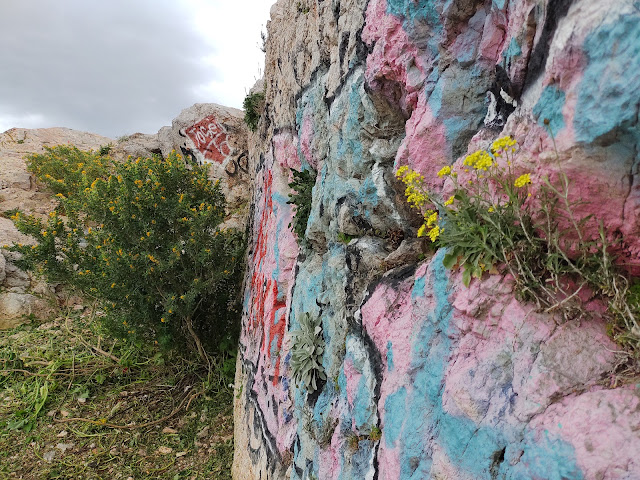


















































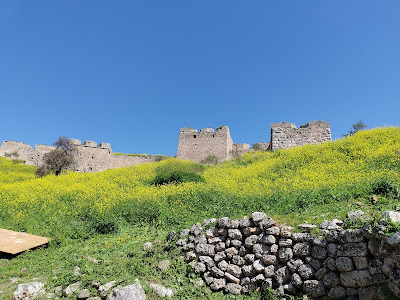

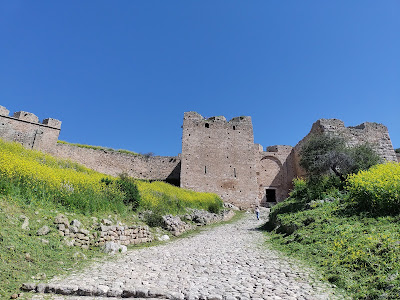

































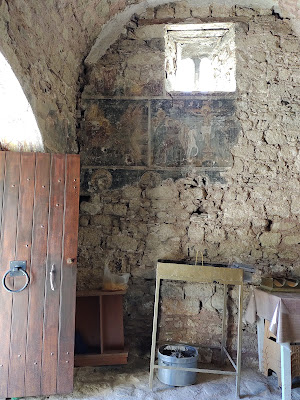


































































Comments
Post a Comment